
Spoonbills are a genus, Platalea, of large, long-legged wading birds. The spoonbills have a global distribution, being found on every continent except Antarctica. The genus name Platalea derives from Ancient Greek and means "broad", referring to the distinctive shape of the bill. Six species are recognised, which although usually placed in a single genus have sometimes been split into three genera.

The buntings are a group of Old World passerine birds forming the genus Emberiza, the only genus in the family Emberizidae. The family contains 45 species. They are seed-eating birds with stubby, conical bills.
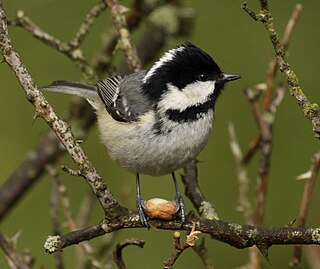
The coal tit or cole tit,, is a small passerine bird in the tit family, Paridae. It is a widespread and common resident breeder in forests throughout the temperate to subtropical Palearctic, including North Africa. The black-crested tit is now usually included in this species.
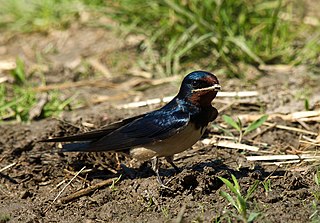
The bird genus Hirundo is a group of passerines in the family Hirundinidae. The genus name is Latin for a swallow. These are the typical swallows, including the widespread barn swallow. Many of this group have blue backs, red on the face and sometimes the rump or nape, and whitish or rufous underparts. With fifteen species this genus is the largest in its family.

The Himalayan black-lored tit, also known as simply black-lored tit, is a passerine bird in the tit family Paridae. The yellow-cheeked tit is probably its closest relative, and it may also be related to the yellow tit. These three tits almost certainly form a distinct lineage, as indicated by morphology, and mtDNA cytochrome b sequence analysis.

Certhia is the genus of birds containing the typical treecreepers, which together with the African and Indian spotted creepers make up the family Certhiidae.

Procellaria is a genus of Southern Ocean long-winged seabirds related to prions, and within the order Procellariiformes. The black petrel ranges in the Pacific Ocean, and as far north as Central America. The spectacled petrel is confined to the Atlantic Ocean, and the Westland petrel to the Pacific Ocean. The white-chinned and grey petrel range throughout the higher latitudes of the Southern Ocean.
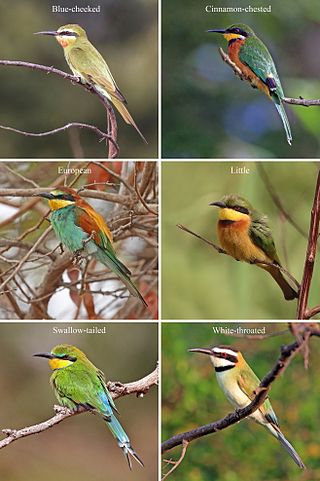
Merops is a large genus of bee-eaters, a group of birds in the family Meropidae, native to Africa, Asia, Australia and Europe. The members of this family are characterised by richly coloured plumage, slender bodies and usually elongated central tail feathers. They predominantly eat insects, especially bees, wasps and hornets, which are caught in the air.

The genus Paradisaea consists of six species of birds-of-paradise. The genus is found on the island of New Guinea as well as the nearby islands groups of the Aru Islands, D'Entrecasteaux Islands and Raja Ampat Islands. The species inhabit a range of forest types from sea level to mid-montane forests. Several species have highly restricted distributions, and all species have disjunct distributions. A 2009 study examining the mitochondrial DNA of the family found that the Paradisaea birds-of-paradise were in a clade with the genus Cicinnurus. It showed that the blue bird-of-paradise was a sister taxon to all the other species in this genus.

Pavo is a genus of two species in the pheasant family. The two species, along with the Congo peafowl, are known as peafowl.

The white-winged black tit is a passerine bird in the tit family Paridae. It is also known as the white-winged tit, dark-eyed black tit or northern black tit. The species was first described by Eduard Rüppell in 1840.
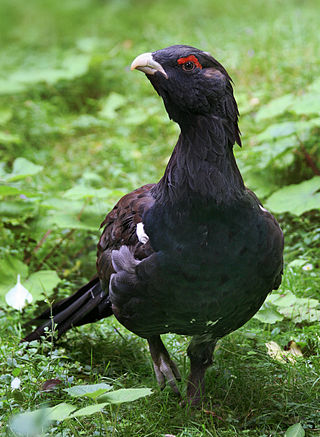
Tetrao is a genus of birds in the grouse subfamily known as capercaillies. They are some of the largest living grouse. Feathers from the bird were used to create the characteristic hat of the bersaglieri, an Italian ace infantry formation.

The grey tit is a species of bird in the tit family Paridae. It is found in Lesotho and South Africa. Its natural habitats are subtropical or tropical dry shrubland and Mediterranean-type shrubby vegetation.

The elegant tit is a species of bird in the tit family Paridae endemic to the Philippines.
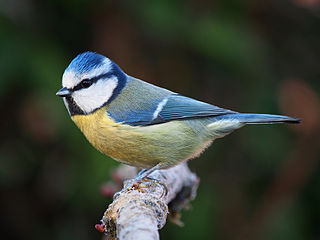
Cyanistes is a genus of birds in the tit family Paridae. The genus was at one time considered as a subgenus of Parus. In 2005 an article describing a molecular phylogenetic study that had examined mitochondrial DNA sequences from members of the tit family, proposed that a number of subgenera including Cyanistes be elevated to genus status. This proposal was accepted by the International Ornithologists' Union and the British Ornithologists' Union.

Otis is a genus of bustard containing a single living species, the great bustard (Otis tarda).
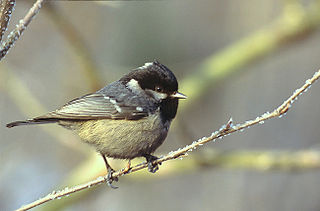
Periparus is a genus of birds in the tit family. The birds in the genus were formerly included in Parus but were moved to Periparus when Parus was split into several resurrected genera following the publication of a detailed molecular phylogenetic analysis in 2005. The name Periparus had been introduced for a subgenus of Parus that included the coal tit by the Belgium naturalist Edmond de Sélys Longchamps in 1884. The genus name, is Ancient Greek peri plus the pre-existing genus Parus.
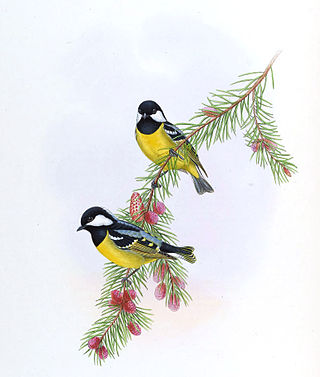
Pardaliparus is a genus of birds in the tit family. The members of the genus were formerly included in Parus but were moved to Pardaliparus when Parus was split into several resurrected genera following the publication of a detailed molecular phylogenetic analysis in 2013.
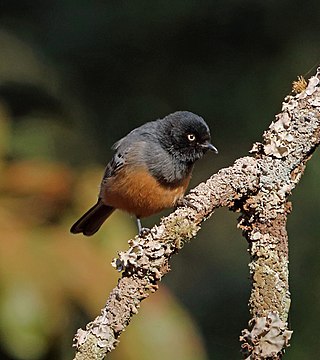
Melaniparus is a genus of birds in the tit family. The species were formerly placed in the speciose genus Parus but were moved to Melaniparus based on a molecular phylogenetic analysis published in 2013 that showed that the members formed a distinct clade. The genus Melaniparus had originally been introduced by the French naturalist Charles Lucien Bonaparte in 1850. The type species was subsequently designated as the southern black tit. The name of the genus combines the Ancient Greek melas, melanos "black" and the genus Parus introduced by Carl Linnaeus in 1758.
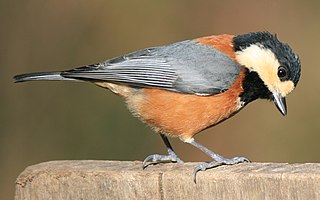
Sittiparus is a genus of birds in the tit family Paridae. The species in the genus were formerly included in Parus but were moved to Sittiparus when Parus was split into several resurrected genera following the publication of a detailed molecular phylogenetic analysis in 2013. The genus Sittiparus had originally been erected by the Belgium politician and naturalist Edmond de Sélys Longchamps in 1884 with the varied tit as the type species.

























